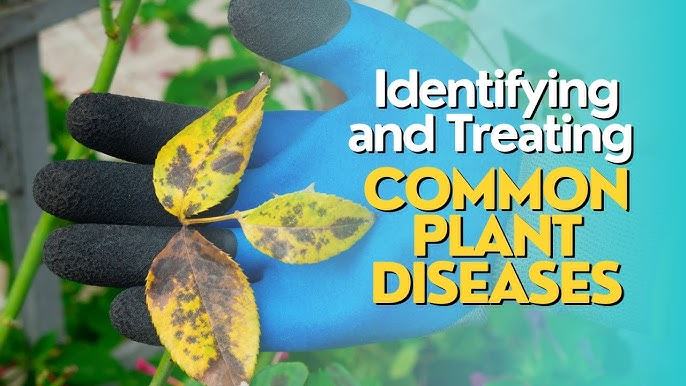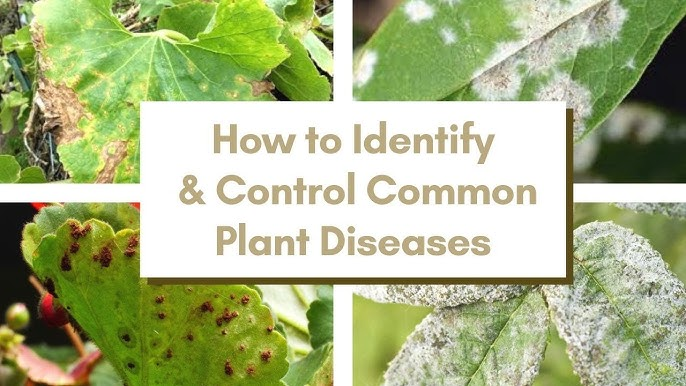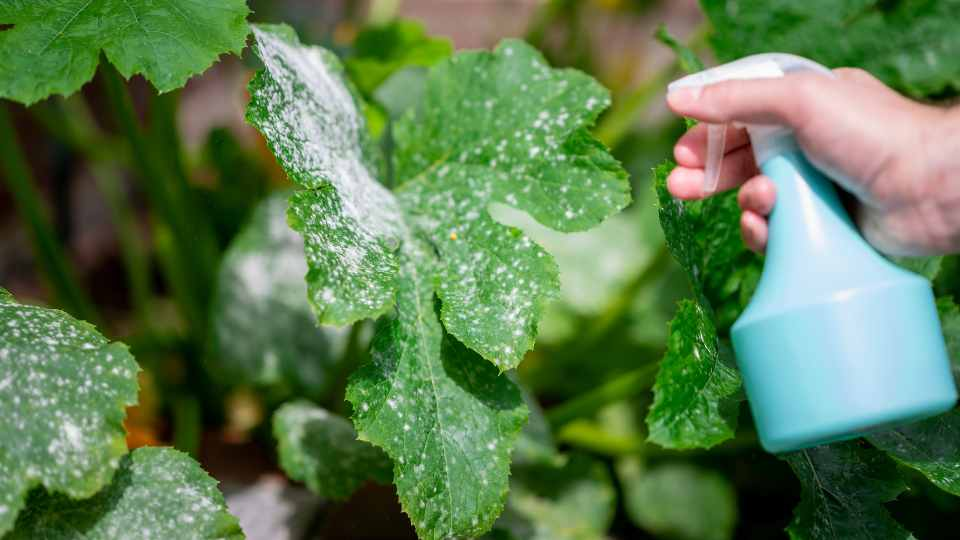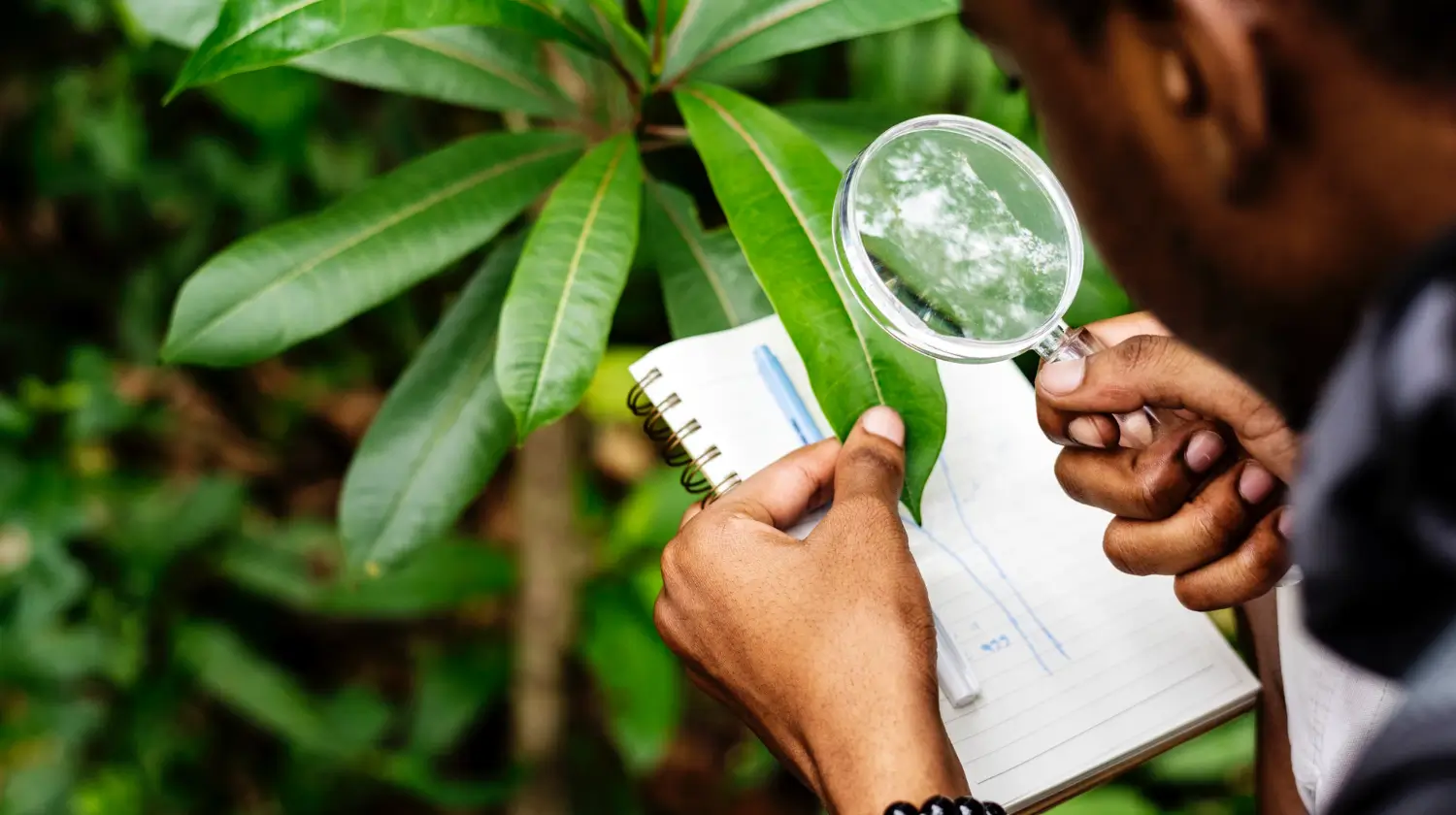Plant health is a fundamental aspect of successful agriculture and gardening. Healthy plants lead to better crops, higher quality produce, and a balanced environment. For farmers and gardeners, keeping plants strong and disease-free is essential for growing good crops. Nowadays, plant diseases are a big problem for farmers. These diseases can damage crops, reduce the amount of food grown, and even destroy entire harvests.
Plant diseases caused by fungi, bacteria, viruses, or pests can harm plants by stopping their growth and weakening their defenses. Once a disease starts, it can spread quickly, sometimes before anyone notices it. Infected plants are also more likely to be affected by other problems, such as drought or poor soil, which weakens them. This can lead to lower crop yields, higher costs, and less profit.
Identifying plant diseases early is key to preventing damage. If symptoms are caught early, growers can treat or prevent the disease quickly, stopping it from spreading to other plants. Growcycle is a B2B marketplace that supports gardeners and farmers in maintaining healthy, disease-free plants, ensuring a productive and sustainable growing environment.

Plant Diseases and Their Causes
Plant diseases are problems that affect plants, causing them to grow poorly, produce less, or even die. They can be caused by various factors, such as living organisms, the environment, or mistakes made in plant care.
Plant diseases can be divided into two main types:
- Biotic Diseases are caused by living organisms like fungi, bacteria, viruses, and nematodes. These pathogens enter plants, damage them, and weaken the plant’s ability to fight off other problems.
- Abiotic Diseases, on the other hand, are caused by non-living factors, such as bad weather, poor soil, or incorrect care, such as overwatering or a lack of nutrients.
Causes of Plant Diseases
- Fungi: Fungi are a common cause of plant diseases. They grow well in moist, warm conditions and can spread quickly. Fungal diseases can cause problems like mold, mildew, rust, and blight on leaves, stems, and roots.
- Bacteria: Bacteria can cause diseases such as leaf spots, wilting, and rotting. Bacteria enter plants through wounds or natural openings, causing tissues to break down. They spread through water, wind, or by contact with infected tools or people.
- Plant viruses are tiny particles that enter plant cells and cause damage. They are usually spread by insects like aphids or through infected plants. Signs of viral infections include yellowing leaves, stunted growth, and deformed flowers or fruits.
- Nematodes: Nematodes are small worms that live in the soil and attack plant roots. They make it harder for plants to absorb water and nutrients, which can cause wilting and slow growth.
Common Plant Diseases
Plant diseases can cause significant damage to crops and garden plants if not identified and managed early. Here is a detailed overview of common plant diseases:
1. Fungal Diseases
- Powdery mildew is a common fungal disease that causes white or grayish patches on leaves, stems, and buds. The fungus thrives in warm, dry environments and often spreads during spring and fall. Affected plants may show stunted growth, yellowing of leaves, and distorted plant parts. Common plants affected include cucumbers, roses, and grapevines.
- Downy mildew appears as yellowish spots on the upper side of leaves and a downy white or purple growth on the underside. It thrives in humid conditions and typically affects crops like lettuce, spinach, and grapes. This disease can cause significant crop damage, leading to reduced yields and poor-quality produce.
- Rust diseases are caused by fungi that create rust-colored spots on leaves, stems, and flowers. There are several types of rust, such as soybean rust and wheat rust. Symptoms include small, raised orange or brown pustules on the leaves, which eventually cause the plant to die. Rusts often thrive in cool, moist conditions.
- Root rot is caused by fungal pathogens like Phytophthora and Fusarium, which thrive in waterlogged soil. Infected plants show wilting, yellowing leaves and a general decline in health. When examined, the roots appear brown or mushy.
2. Bacterial Diseases
- Bacterial wilt is caused by bacteria that infect plant vessels. The plant wilts and dies quickly, and affected plants may show drooping leaves and darkened stems. The plant cannot take up water as the disease progresses, leading to a rapid decline.
- Leaf spot is a bacterial disease that causes dark, circular spots on leaves. It can affect a variety of plants, including tomatoes, peppers, and beans. Yellow halos may surround these spots. The disease spreads through water splashing on leaves or infected plant debris.
- Bacterial blight causes dark lesions on leaves, stems, and fruit, leading to significant crop losses, especially in tomatoes and beans. It spreads through water, insects, or contaminated tools. The disease often results in poor fruit quality and stunted growth.
3. Viral Diseases
- Tobacco Mosaic Virus (TMV) causes mottled yellowing of leaves, stunted growth, and curling of the leaves. It can affect many plants, including tobacco, tomatoes, and peppers. The virus is spread by contact with infected plant material or contaminated tools.
- Cucumber Mosaic Virus (CMV) causes yellowing and stunting of plants, often with distorted leaves. It is primarily spread by aphids, which carry the virus from one plant to another. CMV can significantly reduce crop yields, especially in cucumbers, squash, and melons.
4. Nematode Infections
- Root-knot nematodes are small, worm-like pests that attack plant roots, swelling them and causing them to form knots. Affected plants may show stunted growth, wilting, and yellowing. They often infect crops like tomatoes, peppers, and potatoes.
- Cyst nematodes form cysts on plant roots, leading to poor root development and stunted plant growth. Crops like soybeans, tomatoes, and beans are commonly affected.
How to Identify Plant Diseases
Identifying plant diseases early is key to effective treatment and prevention. Plants may show various signs that indicate they are suffering from a disease. These symptoms can often be the first clue that something is wrong and should not be ignored.

Common Signs of Plant Diseases
- Discoloration: Yellowing or browning of leaves, stems, or flowers is a common symptom of plant diseases. For instance, a yellowing leaf may suggest a fungal or bacterial infection or a nutrient deficiency.
- Wilting: Wilting, in which the plant appears limp and drooping, can result from root rot, bacterial wilt, or drought stress. Damaged roots can prevent the plant from absorbing enough water, causing wilting.
- Spots: Dark, round, or irregular spots on leaves and stems can signal bacterial or fungal infections. These spots can vary in color, from brown to black, and often have a yellow halo.
- Mold or Mildew: Fungal growth, like white, powdery patches on the leaves or downy mildew underneath the leaves, is a sign of fungal infection. This type of growth thrives in humid conditions and should be addressed immediately to prevent further spread.
Tools and Techniques for Diagnosing Diseases
- Magnifying Glass: A simple magnifying glass can help observe smaller details, such as insect pests, fungal growth, or unusual leaf patterns, which are often early signs of disease.
- Microscopes: For more detailed examination, especially when dealing with microscopic pathogens like bacteria and viruses, a microscope can provide a clearer view of disease-causing organisms.
- Soil Tests: Soil health plays a significant role in plant disease. A soil test can reveal issues like nutrient imbalances or pH levels that may contribute to plant stress, making them more susceptible to diseases.
Treatment and Prevention Strategies
Plant diseases can be effectively managed using a combination of cultural practices, organic treatments, chemical solutions, and integrated disease management. A well-rounded approach helps prevent diseases, reduce their impact, and ensure long-term plant health.
1. Cultural Practices
Crop rotation helps break the cycle of soil-borne diseases by preventing pathogens from building up in the same area over time. Rotating crops with different plant families reduces the chances of reinfection.
Proper plant spacing can also improve air circulation, reducing humidity levels that promote fungal growth. Correct irrigation techniques, such as drip irrigation instead of overhead watering, minimize leaf moisture, lowering the risk of fungal and bacterial diseases.

Many plant breeders develop disease-resistant varieties that can withstand common pathogens. Selecting these varieties reduces the need for chemical treatments and increases the chances of a successful harvest.
Diseases often spread through contaminated tools and equipment. Regularly cleaning and disinfecting gardening tools, pots, and greenhouses can prevent the unintentional transfer of pathogens from one plant to another.
2. Organic Treatment Methods
- Neem oil is a popular natural remedy for controlling plant diseases and pests. It acts as both a fungicide and an insect repellent, making it effective against fungal infections like powdery mildew and rust and harmful insects that spread disease.
- Diatomaceous earth, a fine powder made from fossilized algae, is another organic solution that helps to control pests. When sprinkled around plants, it damages the outer layers of insects like aphids and beetles, reducing their numbers and preventing the spread of disease.
- Baking soda sprays are a simple and cost-effective method of combating fungal infections. By mixing baking soda with water and a small amount of dish soap, the spray alters the leaf surface pH, making it difficult for fungi to thrive.
Certain insects, such as ladybugs and lacewings, feed on pests that spread plant diseases. Beneficial microbes, like Bacillus subtilis, can suppress harmful fungi and bacteria in the soil. Biological control agents reduce the need for chemical pesticides.
Growing specific plants together can also naturally reduce disease risks. For example, marigolds help repel nematodes, while basil can improve tomato plant health. Some plants release compounds that deter pests or increase the growth of their neighboring plants.
3. Chemical Treatments
Sometimes, plant diseases become too severe for natural methods to control. In such cases, chemical treatments can help. Fungicides are used to stop fungal infections like blight and mildew, while bactericides help control bacterial diseases that cause leaf spots and wilts. For harmful soil pests like nematodes, nematicides are applied to protect plant roots.
Choosing the right chemical is important. Different products are made for specific diseases, so reading the label and selecting the correct treatment is important. Using the wrong product may not work and could harm other plants and organisms. Growers should also consider the best time and method to apply the treatment for the best results.

There are different ways to apply chemical treatments:
- Spraying is used for leaf diseases to ensure all affected areas are covered.
- Soil treatment helps control infections in the roots and soil.
- Seed treatment protects seeds before they start growing, reducing early-stage infections.
4. Integrated Disease Management (IDM)
Integrated Disease Management (IDM) uses multiple strategies to control plant diseases effectively. Instead of relying solely on one method, IDM combines good farming practices, organic treatments, and targeted chemical applications to create a balanced approach.
Overuse of chemicals can lead to resistant pathogens. By integrating different management techniques, IDM reduces the risk of resistance while maintaining soil and plant health. It also promotes sustainable agriculture by reducing chemical dependency.
Seasonal Care and Disease Prevention
Plant diseases often change with the seasons, as temperature, humidity, and rainfall influence their spread. Each season requires specific care to reduce disease risk and keep plants strong.
Spring
Spring is a time of new growth, but it also brings high moisture levels that encourage fungal and bacterial diseases. To prevent infections, growers should:
- Remove plant debris from winter to eliminate disease-carrying pathogens.
- Prune carefully to improve air circulation and reduce moisture buildup.
- Apply mulch around plants to prevent soil-borne diseases from splashing onto leaves.
- Inspect plants early for signs of disease and pests before they spread.
Summer
Hot and dry conditions in summer can stress plants, making them more vulnerable to infections. To maintain plant health:
- Water at the base of plants in the early morning or evening to avoid excess moisture on leaves, which can lead to fungal diseases.
- Monitor for heat stress and ensure plants receive enough nutrients to strengthen their resistance.
- Provide shade for delicate plants to prevent sun damage that weakens their defenses.
- Watch for pests like aphids and mites, as they can spread diseases quickly in warm weather.
Fall
Some diseases, especially fungal infections, become more active as temperatures cool. To prevent problems:
- Clean up fallen leaves and plant debris to stop diseases from overwintering.
- Avoid late-season fertilization, as new growth may not have time to harden before winter, making plants vulnerable.
- Apply organic fungicides if plants are prone to fungal diseases like rust or powdery mildew.
- Check soil moisture to prevent overwatering, which can lead to root rot.
Winter
While plant growth slows in winter, diseases can still linger in soil and dormant plants. To protect plants:
- Inspect indoor and greenhouse plants regularly for mold and pests.
- Sanitize tools and pots before the next growing season to eliminate lingering pathogens.
- Apply dormant sprays on fruit trees and shrubs to prevent spring infections.
- Plan for the next season, selecting disease-resistant plant varieties and improving soil health.
Summary
Understanding plant diseases, their causes, and how to treat them helps farmers and gardeners protect their plants and grow more food. Finding diseases early can prevent their spread, and using different methods, such as smart farming practices, natural treatments, and chemicals, can help control infections.
With the right knowledge and tools, growers can protect their plants, prevent major crop damage, and support a healthy environment. Visit Growcycle to find the right solutions for indoor and outdoor plant diseases.
Disclaimer: This material is for informational purposes only and should not be relied on for legal, medical, financial, or any other form of professional advice.

